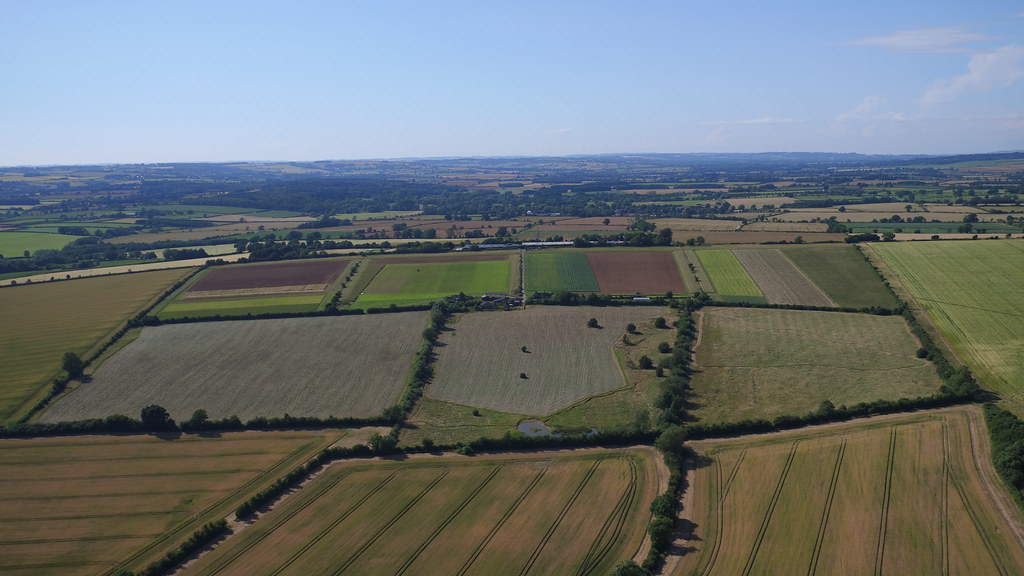The plants in the polytunnel have been progressing well, with some of the annual wild flowers now shedding seed after a summer-long display. The Cotswold Common sainfoin plants have established particularly successfully, with some coming into flower. Our plan with this crop is to harvest the seed to preserve this important landrace.
Weaning the Lambs
The ewes and lambs were weaned earlier this month, with the ewes being taken to another pasture on a neighbouring farm in preparation for tupping in the near future. The lambs that have been kept on the Honeydale pasture look extremely healthy and some have been moved to the adjacent hay meadow. The fields they vacated have greened up well during the warm autumn so will offer some first class early grazing in the spring.

Shelter Belt
We have embarked on the creation of a new wildflower area at the top end of the farm, along with a shelter belt of trees to produce a low storey shrubby and glades habitat for farm and woodland birds. The stubble was cultivated by power-harrowing and the seed then broadcast from a quad bike and rolled in with a heavy flat-roll. We eagerly await the spring to see what appears!

Greedy Geese
Since the bales have been cleared from the stubble, we’ve seen an abundance of wildlife on Honeydale, including brown hares crouching on the skyline and several resident deer. Most recently, a flock of Canadian Geese has been grazing on the stubbles most mornings and evenings. We don’t want too many of them though, since they’re notoriously greedy!

October
Filling the Hungry Gap
We had a visit from the appropriately named, Dr Alan Larkman, Chair of the Oxfordshire Ornithological Society, and Louise Spicer and her colleague Claire from BirdAid - which offers a lifeline to birds during winter - who are working together within the Wychwood Project to promote supplementary feeding.
Providing supplementary food for seed-eating birds, such as the Yellowhammer, Grey Partridge, Tree Sparrow, Corn Bunting, Linnet and Skylark, has been shown to significantly increase their chances of survival during the winter months.
From the middle of December to the middle of March, seed-eating farmland birds can struggle to find enough food to sustain themselves. This is known as the ‘hungry gap’ during which natural food sources and sown bird survival mixtures are often exhausted, leaving the lives of some seeding eating species in the balance, especially in harsh freezing winter conditions and cold springs.
New environmental stewardship schemes are providing funding for supplementary feeding but, like many other farmers and landowners, we’re funding it ourselves, using our small seeds - including millet, linseed, oilseed rape and radish.
Half of the land at Honeydale is stubble now - a mix of Barley Volunteer (and Barley Grain) mixed with Field Madder, Dwarf Spurge, Chickweed, Speedwell, Field Pansy, and Rough Hawkbit, which the small farmland birds have been feeding on, so we’ll be supplementary feeding on these areas where the birds seem to be most comfortable.
Louise was delighted to tell us that Corn Buntings have been sighted by a cyclist further down the valley, so we’re hoping they may visit Honeydale soon.
Hedge Fund Management
Ornithologist Dr Larkman was also very excited to see the mature hedgerows at Honeydale which he described as ‘a great asset for the bird community.’ We’re now looking at how best to manage our own ‘hedge fund’, with plans to retain a large area of the hedges and rejuvenate a small percentage by ‘laying’ them, thereby promoting traditional agricultural skills.



.png)
































0 comments: